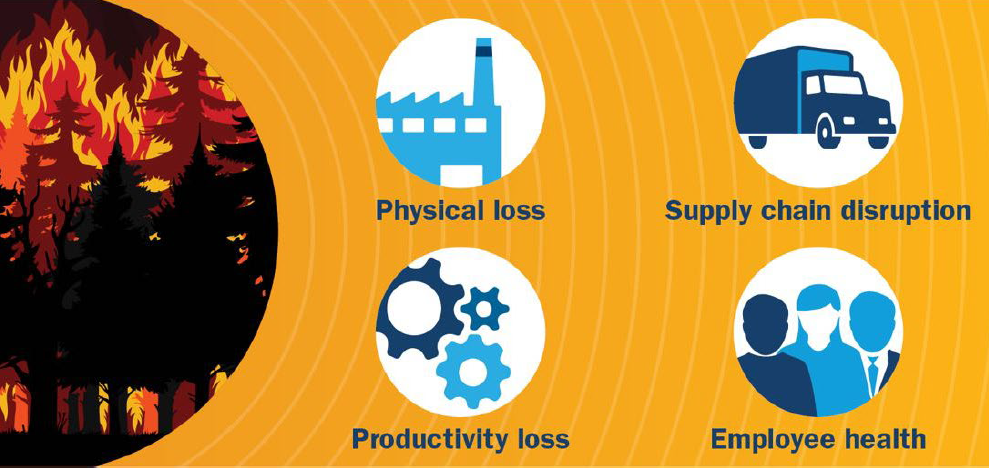Unseen costs
A factor for any business
Taking a more sophisticated view

Proximity to fire alone does not determine risk. In a paper published in Nature Sustainability, the authors observed that: “While the deadliest wildfires (in 2018) destroyed many houses and other physical infrastructure, the air pollution triggered caused a great burden to people’s health. Productivities were therefore reduced due to sickness in California. The slowdown in production caused ripple effects to economic supply chains within California as well as the other 49 states and abroad.”
A global issue
The bottom line for investors
Increasing risks to business and the economy from wildfires and other climate change-driven environmental impacts such as flooding, excessive heat and violent storms are not going away – and will most likely get worse. Investors need to leverage the right research and analytical tools to determine the effects on their investments and allocations. Our responsible investment team is continually evaluating the risks of environmental factors such as wildfires in the companies we invest in – analyses that are baked into our fundamental investment process.
